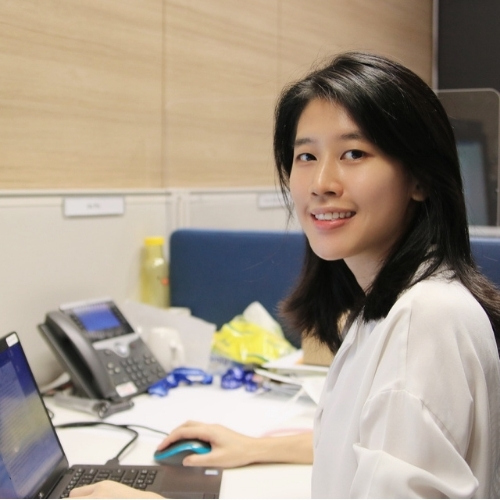FACES OF A*STAR
Women in Science: Dr Ho Pin, IMRE
The ‘Women in Science’ series aims to break down gender inequalities and celebrates the achievements of our female scientists and researchers in A*STAR. Hear their stories and discover how their unique personal lives and perspectives shape the great work they do.
Dr. Ho Pin has been named one of the 2021 Emerging Leaders in the Journal of Physics D: Applied Physics (JPhysD).
The Journal of Physics D: Applied Physics (JPhysD) publishes a special issue called “Emerging Leaders” annually. Emerging Leaders are top researchers in their field who completed their Ph.D. ten years prior to invitation. They are identified by the Editorial Board and the applied physics community as the most exciting researchers in their generation.
About Ho Pin

Q: Tell us what you do at A*STAR.
My work at A*STAR focuses on delivering next-generation non-volatile memory and brain-inspired computing technologies for fast and low energy storage and computing. Such technologies will address the need for real-time processing of voluminous data required in growing areas of artificial intelligence applications. By exploring a combination of novel materials and device designs using state of the art industry-compatible process fabrication tools, I aim to develop high performance and low power nano-electronics which are translatable to memory technology industries.
Q: What are your motivations for getting into your field of expertise?
My first foray into research started by chance during my undergraduate attachment stints at A*STAR, where I studied hard disk drive recording media. There, I enjoyed the investigative nature involving a good mix of basic science and engineering to improve its performance, and the rewarding nature knowing that its success could improve practical data storage capabilities in our daily lives. That has since prompted my continual research journey on similarly exciting fields of emerging non-volatile memory and computing technologies.
Q: What is your favorite time of the day?
I enjoy the evening when I get to reflect, reset and recharge.
Q: What is the best advice you’d give your teenage self?
Don't be too fixated on a single path. An alternative route might evolve into a surprisingly exciting and fruitful journey.
Q: What is the most adventurous thing you’ve done in your life?
Exploring the Greater Antilles islands of Haiti, Jamaica and Cayman Islands.
Q: What is best way to take a rest/decompress?
Unwinding over a gin and tonic with close ones.
Q: What would you say to young women who aspire for careers in science?
I believe every individual can be involved in STEM and never underestimate your abilities to excel in it. The beauty of science experiments is that you can always be experimenting and trying. To all the young women who have a passion for pursuing STEM, set your sights high, have the courage to fail, and the perseverance to keep trying. Surround yourself with positivity and role models who can spur you on to achieve excellence. I look forward to seeing more young women in the STEM fields. As the saying goes, girls with dreams become women with vision. The possibilities are endless.
Was this article helpful?
A*STAR celebrates International Women's Day

From groundbreaking discoveries to cutting-edge research, our researchers are empowering the next generation of female science, technology, engineering and mathematics (STEM) leaders.
Get inspired by our #WomeninSTEM
